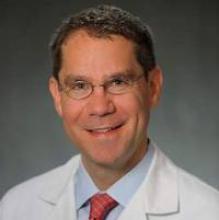Among older men with high-risk prostate cancer, receiving androgen-deprivation therapy in combination with radiotherapy reduced cause-specific and all-cause mortality by as much as 50% when compared with those who received androgen-deprivation therapy alone, results from a large-scale data review showed.
In fact, men over the age of 65 with locally advanced prostate cancer risk significantly higher mortality rates if they are treated with androgen-deprivation therapy (ADT) without accompanying radiotherapy (RT), according to the authors of a study published online Jan. 5 in the Journal of Clinical Oncology.
“Our findings raise a provocative hypothesis that in the United States, men age 75 years (or older) with locally advanced prostate cancer or men age 65 years (or older) with high-risk screen-detected prostate cancer who receive ADT alone risk decrements in cause-specific and overall survival,” wrote Dr. Justin E. Bekelman and his associates (J. Clin. Oncol. 2015 Jan. 5 [doi:10.1200/JCO.2014.57.2743]).
The large-scale data review, led by Dr. Bekelman of the University of Pennsylvania, Philadelphia, examined 31,451 men who developed prostate cancer between the ages of 65 and 85 whose medical records were included in the Surveillance, Epidemiology, and End Results (SEER) Medicare database. The men were diagnosed between 1995 and 2007 and observed through 2009.
The patients examined in the study were divided into three cohorts, including a primary cohort (which included men aged 65 to 75 years and was consistent with participants in randomized, controlled trials); an elderly cohort (which included men from 75 to 85 years old with locally advanced prostate cancer); and a screen-detected cohort (which included men over 65 years old with screen-detected high-risk prostate cancer).
Among men aged 76-85, ADT plus RT reduced cause-specific and all-cause mortality from 9.8% to 5.0% of patients, compared with ADT alone at 7 years follow-up. Among men aged 65-75, ADT plus RT reduced cause-specific and all-cause mortality from 9.8% to 4.4% compared with ADT alone at 7 years follow-up.
Though a number of studies have examined the effects of combination therapy for prostate cancer, the authors noted that geriatric patients are underrepresented in efficacy trials for prostate cancer therapy. In addition, androgen-deprivation therapy by itself is particularly common among patients older than 75, with 40% of patients in that age group receiving ADT without accompanying RT.
“The lack of evidence to guide prostate cancer treatment decisions among older men and those with screen-detected high-risk tumors stands as a special priority among the many evidence gaps in the treatment of prostate cancer,” the authors wrote.


